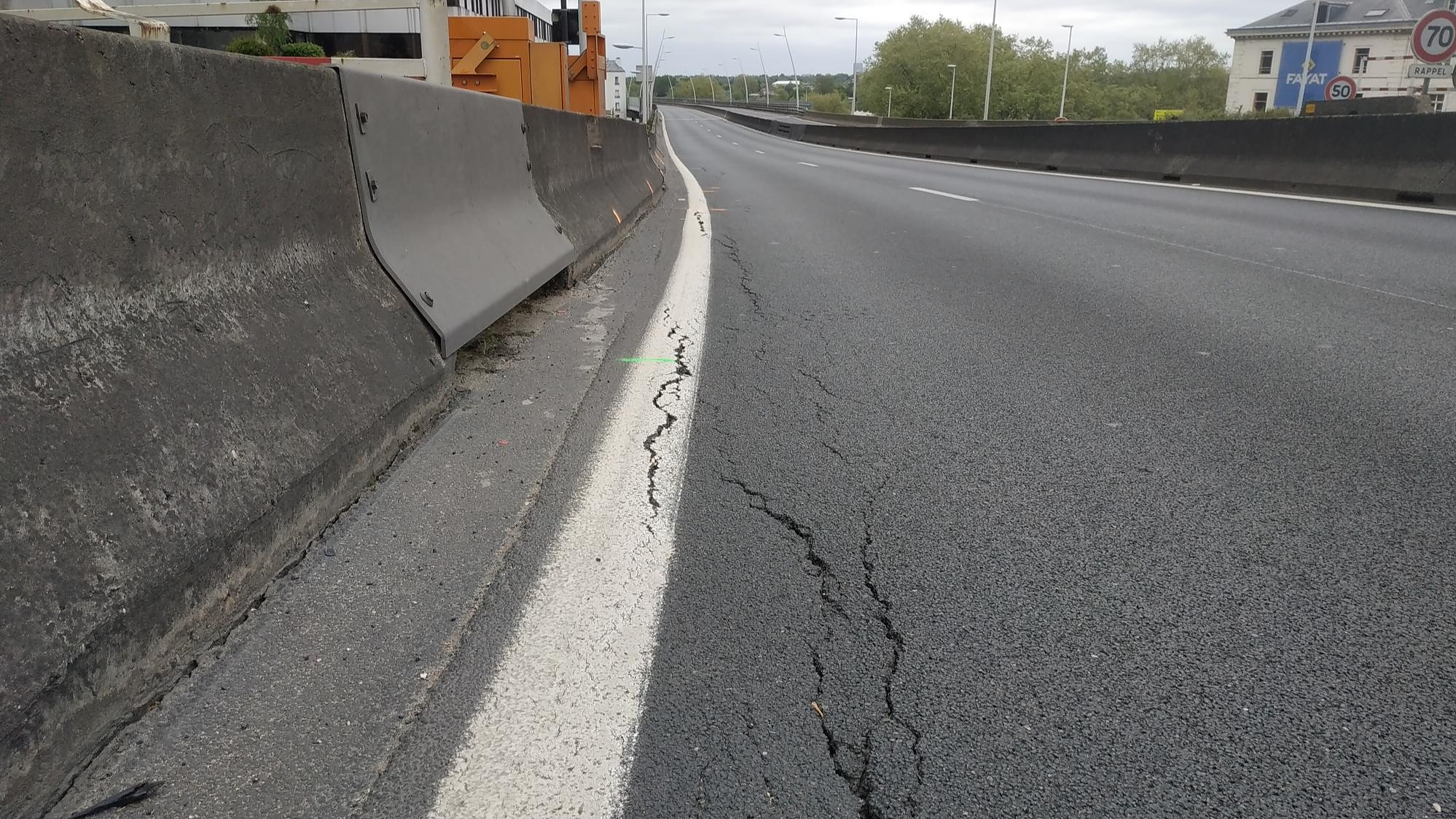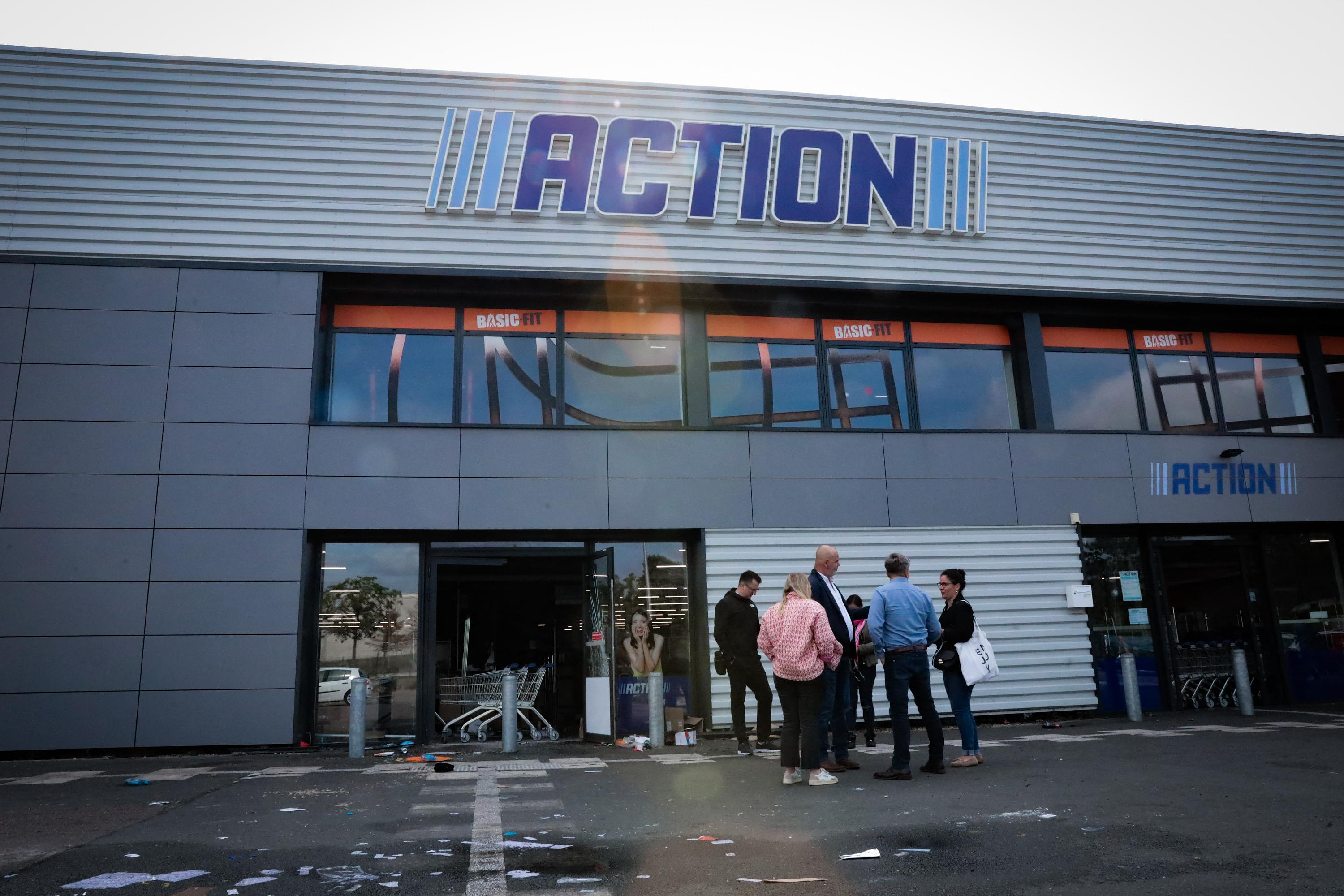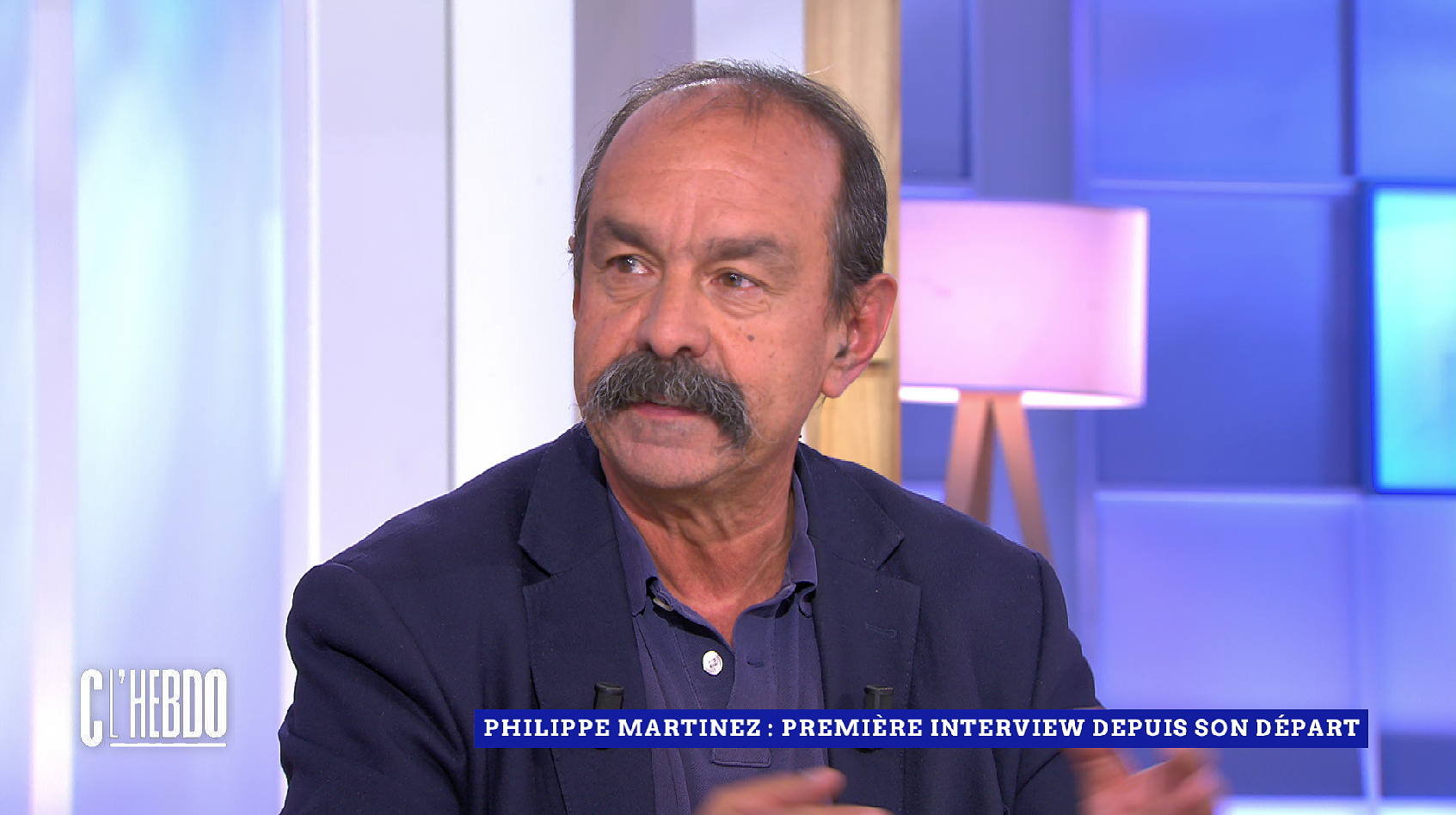Driving in Corsica requires strong nerves and a strong stomach. Apart from the six national roads, on which you can sometimes drive straight for a long stretch, the other roads seem to consist exclusively of curves. Sometimes they are expansive and generous, then again narrow and hairpin-like. From the mountain side there is a risk of falling rocks in some places, on the valley side it goes steeply down into the sea or into deep gorges.
The more remote the street, the narrower it gets. At Cap Corse or in the Castagniccia it gets so narrow that you should honk your horn before every bend - that is, constantly. You can theoretically drive on these hara-kiri highways at a speed of ninety kilometers per hour.
That's absurd, because you'd have to really step on the gas pedal to even reach this pace. Most people who are unfamiliar with the area prefer to swing through the curves with a relaxed forty or fifty on the speedometer. That's enough, you already feel like you're in a racing driver video game.
Care should also be taken with signposts and place-name signs. They are often bilingual, with the name of the town or village in French and in Corsican. The challenge here is that nationalists often spray paint over or shoot up the French designation. And by shoot, I mean shoot, with real buckshot or real bullets. The French lettering is therefore often illegible.
Bad luck for those who don't speak Corsican. It is true that many place names are immediately apparent even to those who do not know Corsican: Ajaccio, for example, means Aiacciu in Corsican, and Porto becomes Portu. With Bavella (Bavedda) or Propriano (Prupia) it gets more complicated, which can lead to some confusion.
The second challenge is the mileage. They are probably based on the beeline between the places or on some other dubious measuring method, in any case the time that an experienced driver in Germany would calculate to cover a certain distance does not correspond to the stated distance.
So when you read on the west coast just before Patrimonio that there are still 19 kilometers to Bastia, you shouldn't think that's a stone's throw away. In between lies the Teghime Pass. It is 536 meters high and has some of the most adventurous curves on the entire island. If your speedometer reads more than forty kilometers per hour over long distances, your name is either Sebastian Vettel or you are suicidal.
Once at the top of the pass, you may lose extra time because you feel like getting off and looking around. This happens more often on the pass roads of Corsica, because the views are often just too spectacular to rush past them.
But it could also be that the urge to get out of the car overcomes you for a completely different reason: when the curves have caused your stomach to rebel. To this day I still get a kind of phantom sickness before long car journeys in Corsica, simply because I know that the bends will soon follow again.
Paradoxically, what helps is to eat something beforehand, so definitely not go hungry. Reading or studying maps is taboo. Citrus scents soothe the guts, which is why I often take a lemon with me before trips out and nibble on the peel and smell it from time to time.
The Corsican are apparently immune to such complaints. Their resistance to motion sickness, as this irritation of the balance system in the inner ear is called, appears to be innate. Even four-year-olds jump full of energy from the back seat of the car after an almost endless crank ride into the most remote mountain nest.
Adult Corsicans seem to complete a course in racing along with the driving test. Focus: curvy terrain. Completely free of fear, women and men race across their beautiful island as if qualifying for Formula 1. They often drive small cars from Renault or Peugeot, but they get the most out of them. Your overtaking maneuvers are evidence of unbroken trust in God and like to take place directly in front of a hidden curve.
None of this should give the impression that driving a car or motorbike in Corsica is a nightmare. Once you've reached the right level of relaxation, it's even fun. That being said, having your own two or four wheels is still the best mode of transportation to get to areas that you would never get to by bus or train.
There are routes where you would like to stop every hundred meters and pack the view as a souvenir in the trunk, if that were possible, the panoramas are so unique that they are reassembled like in a kaleidoscope after each bend. Also: It's the holidays, who wants to rush? None of this changes the fact that a Corsican doesn't feel complete without his car, no matter how small.
Of course it has to be a petrol engine, I haven't seen a single electric filling station so far. In fact, he has a problem without a vehicle, because the public transport system is not particularly well developed. A bus supposedly drives through our village every day at seven o'clock to the next larger town, but I've never seen it in over thirty years. This may also be due to the fact that I rarely stand at the bus stop at seven in the morning during the holidays. wait, bus stop? There isn't even one here.
It was a beautiful day in May when we decided to finally take a look at the famous U Trinighellu, "the trembling one", as the island train is affectionately called because of its wobbly run on worn rails. Another term of endearment is "TGV" - Train à Grande Vibration, an ironic corruption of the French version of the ICE, in French Train à Grande Vitesse (TGV).
Be that as it may, Corsicans can rave about their little train for hours, about the grandiose landscape, the tunnels masterfully carved into the rock, the bold route through the mountains. However, if you ask them when they last drove with him, they have to think for a long time. The answer is then usually: "As a child." But well, we hadn't thought of it any other way before - and preferred to drive by car.
Bastia train station is a few minutes' walk from the port. When we got there, the first surprise awaited us. Due to track construction work, part of the route to Ajaccio was closed, which is why we first had to get on a bus.
The few other passengers took the news stoically, they seemed used to such incidents. Who cares, as customers of Deutsche Bahn we didn’t know any different. Almost everything went well, we only had to change buses once because the first one had an inexplicable breakdown before departure.
The train, which looks more like a modern S-Bahn, was already waiting for us. Our little group and our luggage climbed a slope overgrown with weeds and trudged across the tracks to him. There is no pedestrian crossing leading from the street to the platform.
Which is astonishing in that a few years ago, the rail network, which is just 232 kilometers long, was renovated and the nostalgic blue and white striped railbuses were replaced with the latest generation of wagons - for the staggering sum of 263 million euros. For the price someone could have thought of a decent access.
At this point, if you're wondering why Corsica even needs a railway, especially one that's so short and so expensive, the answer is: that's why. There is no logical explanation, apart from the fact that in 1888 the ambition was to be up to date and has not lost it to this day. Back then, none other than Gustave Eiffel, the father of the Paris Eiffel Tower, was commissioned to build a bridge over the Vecchio Valley.
The result is impressive: Shortly before Vivario, a minimalist iron construction spans a torrent at an enormous height. If you're sitting in the train, you can't see the bridge because you're going straight over it. It can only be admired from below, you have to walk to the Vecchio Valley. Or buy a postcard.
In 1894 the work on the bridge was officially finished, the first locomotive trundled along with its trailers from Bastia to Corte. Faster than the train could travel, fabulous plans for the further development of the island rushed ahead of him. However, none of the planned branch lines was ever built. Today the “rail network” has the shape of a Y. The main line runs from Bastia via Ponte-Leccia to Ajaccio, the branch from Ponte-Leccia to Calvi.
The rail connection was not profitable from the start, which is why the government tried to quietly close the line during the car boom of the 1960s. Vain. After massive protests from the Corsicans, the French abandoned their plan.
Today, the Corsican railway CFC (Chemins de Fer de la Corse), a subsidiary of the French state railway SNCF, has 272 employees - more than one per kilometer of track! The ongoing operation devours twenty million euros in subsidies every year, it doesn't matter, the Corsicans love their little train dearly, and what they have once taken to their hearts, they defend tooth and claw.
And so there was a touch of decadence about our little pleasure trip. We wanted nothing more than to enjoy the beauty of the island, and the Trinighellu allows us to do that more or less at government expense.
In fact, once we got off the bus and onto the train, everything was exactly as it had been vividly described to us beforehand. The snow-capped mountain peaks towering over lush green slopes. The bizarre silhouettes of individual pines that claw into the rocky ground. Dizzying views in gorges, in the depths of which white water gurgles.
In this respect it is good that the 158-kilometer short journey from Bastia to Ajaccio takes a full 3 hours and 45 minutes, not including the delay. This gives passengers plenty of time to take a close look at the spectacular panoramas that open up outside the train windows. We traversed part of the Plaine Orientale, Corsica's fertile plain to the east, then abruptly turned and chugged inland.
While some coastal resorts throng with tourists in the summer and the real estate boom over the years has meant new developments have eaten farther and farther into the surrounding plains and slopes, much of the island remains untouched. This becomes clear once again on a trip with the Trinighlu.
In Corsica, nature rules, not man. Here and there, as if thrown by magic, there are a few tiny towns, all of which have a problem with young people. So that these remote villages, which are mostly inhabited by pensioners, are not completely cut off from the outside world, they are supplied with food externally. According to an ingenious system, butchers, greengrocers and bakers stop there several times a week on certain days at certain times with their mobile shops.
The best way to find out when exactly they do this is to contact the local bar or cafe owner. Sometimes there are also notices on the bulletin board of the individual church offices. In Corsica, even towns with a handful of residents have their own mayor and council.
The train reaches its highest point in Vizzavona: exactly 906 meters and 62 centimeters above sea level. From now on it goes down through the department of Corse-du-Sud, which the Corsicans call "beyond the mountains". The houses here are no longer made of dark slate, but of the lighter, coarser-looking granite, like the rock into which the railway line was hewn.
We are here on the terra di signori, the former land of the feudal lords. Unlike "this side of the mountains", the Corsicans have never organized themselves into a self-governing community, the terra di commune. To this day, the patriarchal clan structures are more powerful here than on the other side.
Soon the land becomes flatter, the mountains become hills, and behind them the sea can already be guessed. Then the silhouette of Ajaccio comes into view, an imposing backdrop and a worthy conclusion to our train journey, old town houses in the city center surrounded by multi-storey modern residential buildings. Napoleon once compared the Gulf of Ajaccio to that of Naples. He wasn't entirely wrong about that.
The text is an abridged chapter from the recently published "Instructions for Corsica" by Jenny Hoch, Piper Verlag, 224 pages, 16 euros.

 B:SM will break its investment record this year with 62 million euros
B:SM will break its investment record this year with 62 million euros War in Ukraine: when kyiv attacks Russia with inflatable balloons loaded with explosives
War in Ukraine: when kyiv attacks Russia with inflatable balloons loaded with explosives United States: divided on the question of presidential immunity, the Supreme Court offers respite to Trump
United States: divided on the question of presidential immunity, the Supreme Court offers respite to Trump Maurizio Molinari: “the Scurati affair, a European injury”
Maurizio Molinari: “the Scurati affair, a European injury” Irritable bowel syndrome: the effectiveness of low-carbohydrate diets is confirmed
Irritable bowel syndrome: the effectiveness of low-carbohydrate diets is confirmed Beware of the three main sources of poisoning in children
Beware of the three main sources of poisoning in children First three cases of “native” cholera confirmed in Mayotte
First three cases of “native” cholera confirmed in Mayotte Meningitis: compulsory vaccination for babies will be extended in 2025
Meningitis: compulsory vaccination for babies will be extended in 2025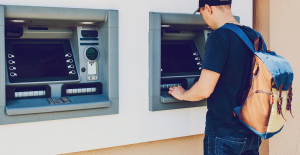 When traveling abroad, money is a source of stress for seven out of ten French people
When traveling abroad, money is a source of stress for seven out of ten French people Elon Musk arrives in China to negotiate data transfer and deployment of Tesla autopilot
Elon Musk arrives in China to negotiate data transfer and deployment of Tesla autopilot Patrick Pouyanné, CEO of TotalEnergies, is very reserved about the rapid growth of green hydrogen
Patrick Pouyanné, CEO of TotalEnergies, is very reserved about the rapid growth of green hydrogen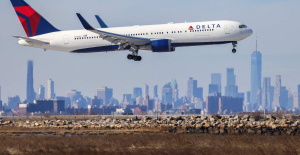 In the United States, a Boeing 767 loses its emergency slide shortly after takeoff
In the United States, a Boeing 767 loses its emergency slide shortly after takeoff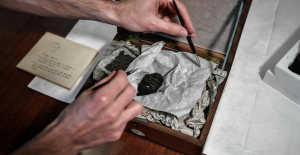 A charred papyrus from Herculaneum reveals its secrets about Plato
A charred papyrus from Herculaneum reveals its secrets about Plato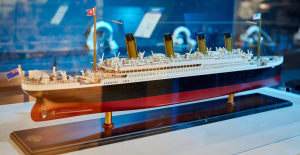 The watch of the richest passenger on the Titanic sold for 1.175 million pounds at auction
The watch of the richest passenger on the Titanic sold for 1.175 million pounds at auction Youn Sun Nah: jazz with nuance and delicacy
Youn Sun Nah: jazz with nuance and delicacy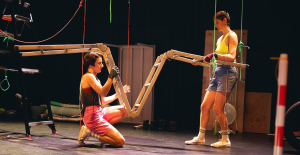 Paris Globe, a new international theater festival
Paris Globe, a new international theater festival Skoda Kodiaq 2024: a 'beast' plug-in hybrid SUV
Skoda Kodiaq 2024: a 'beast' plug-in hybrid SUV Tesla launches a new Model Y with 600 km of autonomy at a "more accessible price"
Tesla launches a new Model Y with 600 km of autonomy at a "more accessible price" The 10 best-selling cars in March 2024 in Spain: sales fall due to Easter
The 10 best-selling cars in March 2024 in Spain: sales fall due to Easter A private jet company buys more than 100 flying cars
A private jet company buys more than 100 flying cars This is how housing prices have changed in Spain in the last decade
This is how housing prices have changed in Spain in the last decade The home mortgage firm drops 10% in January and interest soars to 3.46%
The home mortgage firm drops 10% in January and interest soars to 3.46% The jewel of the Rocío de Nagüeles urbanization: a dream villa in Marbella
The jewel of the Rocío de Nagüeles urbanization: a dream villa in Marbella Rental prices grow by 7.3% in February: where does it go up and where does it go down?
Rental prices grow by 7.3% in February: where does it go up and where does it go down? Even on a mission for NATO, the Charles-de-Gaulle remains under French control, Lecornu responds to Mélenchon
Even on a mission for NATO, the Charles-de-Gaulle remains under French control, Lecornu responds to Mélenchon “Deadly Europe”, “economic decline”, immigration… What to remember from Emmanuel Macron’s speech at the Sorbonne
“Deadly Europe”, “economic decline”, immigration… What to remember from Emmanuel Macron’s speech at the Sorbonne Sale of Biogaran: The Republicans write to Emmanuel Macron
Sale of Biogaran: The Republicans write to Emmanuel Macron Europeans: “All those who claim that we don’t need Europe are liars”, criticizes Bayrou
Europeans: “All those who claim that we don’t need Europe are liars”, criticizes Bayrou These French cities that will boycott the World Cup in Qatar
These French cities that will boycott the World Cup in Qatar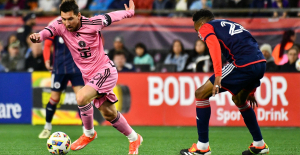 MLS: new double for Messi who offers victory to Miami
MLS: new double for Messi who offers victory to Miami PSG-Le Havre: Ramos on his way, Kolo Muani at the bottom of the hole… Favorites and scratches
PSG-Le Havre: Ramos on his way, Kolo Muani at the bottom of the hole… Favorites and scratches Football: Vasco da Gama separates from its Argentinian coach Ramon Diaz
Football: Vasco da Gama separates from its Argentinian coach Ramon Diaz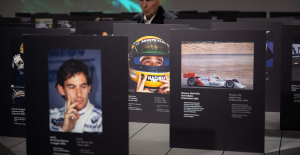 F1: for the French, Ayrton Senna is the 2nd best driver in history ahead of Prost
F1: for the French, Ayrton Senna is the 2nd best driver in history ahead of Prost




